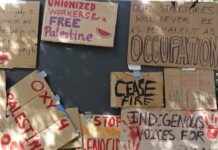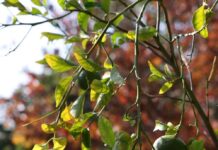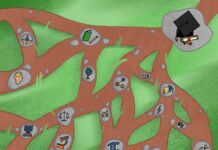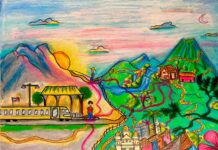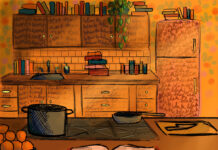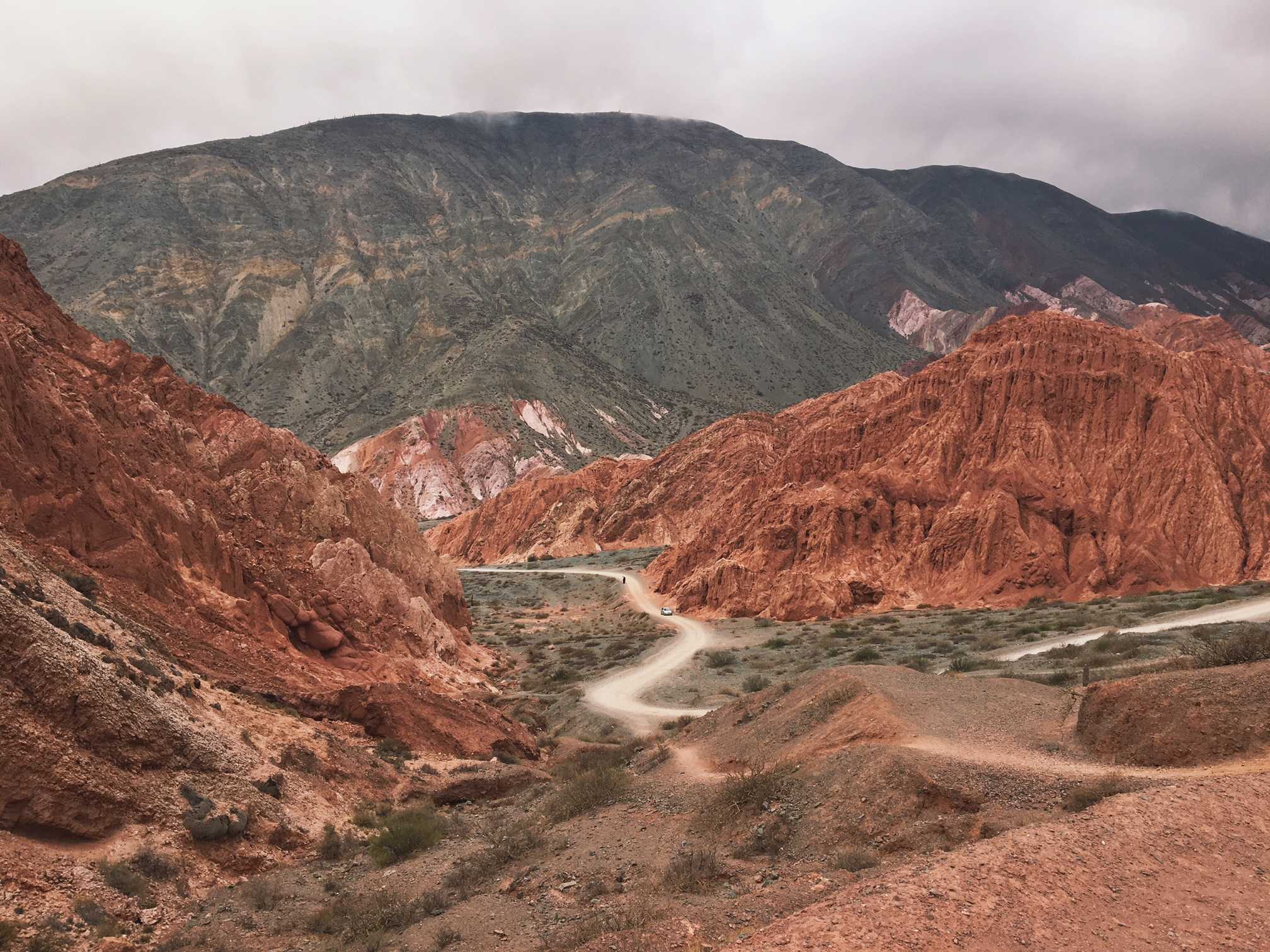Losar tashi delek! Happy Tibetan New Year!
My week has been filled with celebrations. After an unforgettable evening celebrating the Hindu festival of Maha Shivaratri at Pashupatinath, the Losar festivities began.
Before Losar began we attended a puja at one of the local monasteries. The religious ceremony was taking place in order to remove the obstacles from the previous year so as to find Truth in the coming year.
In the courtyard outside of the beautiful Shechen Gompa (monastery) stood a large circle of sixty-odd monks. The outer-layer were dressed in the typical maroon robes and were playing a set of large drums to a harmonious, heavy beat. The inner circle contained monks dressed in elaborate fabric of many colors with large, skull-topped hats; the monks in costume danced to the call of the drum-beat. Chants of prayers and mantras rhythmically echoed throughout the courtyard. Gigantic horns known as tummar’s andrangdung’s joined in the harmonics.
In the center of the circle sat a young man. His name is His Holiness Dilgo Khyenthe Yaygsi Rinpoche and he is a 21-year-old, highly reincarnated lama. About 10 yards in front of him stood a tipi-like structure, made out of bamboo and twine. His Holiness was handed a marvelous spear. To my surprise, he took one step forward and threw it into the tipi. A monk handed him another spear, and then another, all three of which he threw, rather eloquently, into the tipi. Next, he was handed a short rope with a donut shaped structure on the end of it. He slung the white donut into the tipi, and then repeated this action twice more. Next he was handed a bow. His assistant handed him an arrow, and Yaygsi Rimpoche carefully loaded his weapon and shot a bullseye. Following the trend of threes, two more arrow were shot into the tipi. The drums — also known as ngas, tummars,rangdungs — continued with the chanting thorough this lengthily process of tipi assault.
Finally, a group of monks got together and hoisted an intricately decorated, mammoth sized mask into the air and threw it too into the tipi. With a single match, the giant tipi, filled with a conglomerate of imperfections was set a blaze. Chanting continued and the gathering stepped away from the heat of the giant bon fire.
Pujas, chams (masked lama dances), and other such religious ceremonies are happening around the clock in Boudha at this time of year. The attire, acoustics and general atmosphere around the Stupa during Losar is quite pleasant.
Rabzay la, my homestay father, told me Losar is all about blessings, family and food. On the first day of Losar, we enjoyed a traditional breakfast. Grain mixed with yak butter, rice filled with nuts and dried fruit, and to wash it down, yak butter tea and chang — a warm Tibetan barely alcohol, which is surprisingly delicious, a sort of wine-beer-tea hybrid, but becomes less palatable when having to consume the mystery chunks at the bottom.
On the first day of Losar, it is standard practice to visit a monastery; we visited six. At each monastery we removed our shoes, performed there prostrations at the entrance shrine and performed further prostrations at other shrines until we eventually made it to the seat of the rimpoche or lama to receive our blessing. In some cases we handed the rimpoche or lama a khatak — a holy Tibetan scarf — which he would then place around your neck as a blessing. In other cases you would bow forward to receive a little bump on the noggin from a red scripture, another form of blessing. In two other monasteries we were given pieces of red ribbon to place around our necks, apparently yet other form of receiving blessings.
Many other rituals took place at the monastery to which I was completely ignorant. I often found myself waddling behind my home-stay family, watching baby Da-mey in order to figure out what I should do next. At one point in the middle of a gompa, I took a wrong turn and lost my host family; apparently I missed some blessings from the lama’s, but I think I got enough to spare.
I should pause here to pay homage to the unbelievable grandeur of the monasteries. Each gompa contains multiple rooms with Sistine-chapel-esque artistic elegance. 20-foot tall golden statues of the Buddha adorn many rooms. Every corner of every wall is dressed in minutely intricate paintings of holy figures and events. The architecture of the exterior contains perfect geometrical symmetry and the contours of the wood carvings on the windows are jaw dropping.
The next day of Losar we traveled to the other side of Kathmandu to visit Rabzay’s grandmother. There we spent the day with cousins, aunts, uncles and grandma — a lovable and humorous crowd. Upon arrival grandma made me eat two giant platefuls of the special nut and fruit infused rice. Next I was demand to eat sweets and hunks of dried meat in the center of the table. An hour later it was time for lunch. A five course meal of flavorful rice, potatoes, meat, noodles, and veggies was piled onto my plate. As soon as I was able to finish my first behemoth helping, I was bombarded request such as “eat well,” “have more,” “you want.” Inevitably I had second helping of everything.
Rabzay and I took a stroll up to Swayambhu Stupa, another world heritage site in Kathmandu. Swayambhu Stupa is imaculate and stands perched like an eagle overlooking the city. Many shrines and pieces of art exist within the park, with 360 degree views of the himalayas, the city, the monkeys and the hawks. An hour or so later Rabzay got a call from Lamo, his wife, telling him it was time to come back for snack.
“Snack,” which was taking place less than two hours after the largest lunch of my life, consisted of a full four course meal. Though I wanted nothing, it was insisted that I have two heaping plate-fulls of “snack.” After grandma got my phone number and snickers bars were distributed, we eventually headed home via a long, crazy, Kathmandu cab-ride.
Day three of Losar consisted of more of this same. This time we headed to a different grandmoms house within walking distance from our home; all of the same family members were present. Around the Boudhanath Stupa there were Losar celebrations abound. This year, thankfully, the Nepal Arms Police were not present to dissuade the Tibetans from celebrating.
On the final day of Losar — the fifteenth day, on the full moon — more celebrations will ensue.
Until then, I am traveling with my program on Buddhist pilgrimage to India. We are headed to the birthplace of Prince Siddhartha in Lumbini, the place where Buddha found enlightenment in Bodh Gaya, the place where Buddha gave his first sermon in Varanasi and the place where Buddha died in Kushinagar. We will be conducting field work and learning some Buddhist philosophy. We will be gone for 10 days in some of the most improvised regions of India, during which time I will leave my technology behind.
![]()



